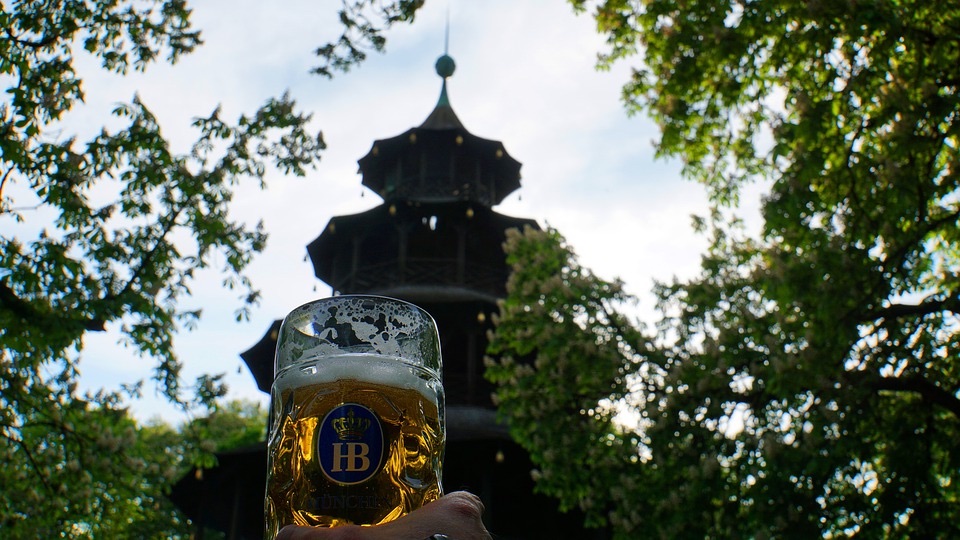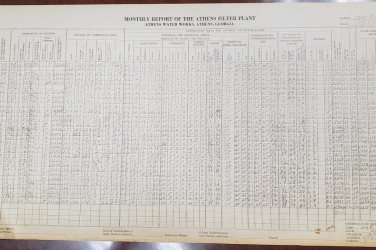When I planned out my trip to Germany, I knew I wanted to eat some of the traditional German foods and see many of the sights I had read about. While on my trip, I met interesting people, and witnessed parts of history that will shape my life forever. In addition to the food and sightseeing, it was also the German people and transportation that made a lasting impression on me.
Why It’s Newsworthy: More people are traveling overseas than in years past. Food transportation and language barriers are often concerns.People
I had butterflies in my stomach as I watched 68-year-old Linda De Santo, a woman originally from the U.S., Eckart Heidenreich, a 65-year-old German native, and their white and brown spaniel with piercing eyes, all hop out of a tiny black Smart Car. They walked into the Italian restaurant and the employees greeted them like family. I gathered right away they were regulars. There I sat, an American student journalist with sweaty palms and a racing heart. Would they be nice? Would they be able to understand me? Would they like me? They put me at ease, right away greeting Chloe Slafka (my roommate) and me with friendly eyes and warm smiles. I even got a lick on the hand from their dog. At that point, I could already tell by the enthusiasm in their voices and their relaxed body language that this was going to be a good conversation. It was our first time out with authentic German people so it was an exciting experience for Chloe and me. This couple seemed just as excited to talk to us as we were to interact with them. They were eager to answer all of our questions, giving many details and examples. They even had questions for us, as well.
Friendly Germans
When traveling to Germany, I had preconceived expectations of how the German people would look and act. The Germans whom I’ve met on this trip have been kind, intellectual and wise. One of my favorite stories Linda and Eckart told was about Linda’s father. Her father was in the U.S. Army and he received a 21-gun salute at his funeral when he passed for having a Purple Heart awarded to him. Linda went on to say, “he was very empathetic. He would thank you for everything that you did, even if it was just making you a sandwich.” Linda’s father was kind and loving, just like she is. They would tell stories about the wars and how they affected their families and Germany specifically. Through these stories, I could tell they are very well educated and care about history. Because of her dad serving in the Army, Linda moved around the U.S. and Germany as a child. She moved to Germany to become a dental hygienist. There she met her German husband, Eckart Heindenreich.
The people I met while in Germany were straightforward. Tom Bennet Fischer, a 25-year-old from Wunstorf said,
Americans say “Hi, how are you doing?” and are very nice and friendly, but sometimes they don’t wait for an answer.”
On the other hand, he claims most Germans ask how you are if they really want to know how are you are doing. I can vouch for him in this sense. In America, people often ask “How are you doing?” as another form as “hello” and it may not matter how bad and down in the dumps you may be–I know I’ve sometimes put on a smile said, “good” or, “fine.”
Eckart Heindenreich explained more about the German people when he recommended a visit to the Chinese Tower in the English Gardens of Munich. He said that you can have the top manager next to a young student, next to an old lady and they all act like family. He explained how social barriers seem to be broken and how beautiful he thinks it is when people accept others in the presence of diversity.
Linda De Santo, says, “I have a dog. I really love walking and we have a lot of parks around and we have a park by where we live that leads down to the English Garden. That’s an important part of my life”. With my time here in Germany, I have noticed many people bring their dogs everywhere. Dogs are in restaurants, parks and even some museums. To me, this is refreshing to see people leisurely strolling along with man’s best friend by their side.
Transportation
Since this was my first time in Germany, I was amazed that the people use so many different forms of public transportation. In Germany, people take trains from one side of the country to another. They even take trains to other nearby European countries for only a few euros to a few hundred. For example, to travel from Munich to Paris by train costs 56 Euros.
I think that there are many differences between America and Germany. One thing is the public transportation. Germans take the bus or also bike more than Americans. We don’t take the car as often.”
In Munich, you’ll find a bike lane on sidewalks where only bikes are allowed. Some tourists may make the mistake of thinking this is just a walking path, but they realize their mistake when they are scolded, bike bells ring at them, or even almost get run over for being in the way. On one of our days in Munich, we took a bike tour throughout the city. I could definitely tell that I was out of place and not used to the rigor. I was huffing, puffing and struggling to make it up some hills in the heat. Meanwhile, locals on their bikes were flying past me like dust in the wind. Some Germans are hesitant to ride a bike. According to StreetBlogUSA.org, “The single biggest reported obstacle was concern about traffic. About 54 percent reported they are worried about being hit by a car or truck, and 46 percent said they would be more likely to ride if they could bike in areas physically separated from traffic.” From first-hand experience, I can say that I would consider riding a bike for transportation if more places in America had bike lanes. It is an easier, safe alternative to people riding in the street next to cars.
Food
German food has been one of the highlights of my trip. I have enjoyed trying so many foods that are new to me. Since my funds are limited, I have not been able to taste everything I desire, so I just enjoy looking and smelling the tantalizing aromas. Schnitzel, a very thin meat surrounded by a mouthwatering crust is one of my favorite traditional German dishes to eat when I’ve been here. I was also fond of a food that I had never heard of called Schweinshaxe. It was a massive pork hock with a flaky, crispy, golden brown skin. Through reading and conversing with people, I learned that immigrants brought in many of the foods that are now considered to be traditional German foods.
Fresh Produce
Matt Edhouse, a 28-year-old from New Zealand said, The food here seems more homely and not as processed as America’s food.” His wife, Staci, also a 28-year-old from New Zealand went on to say, “There are lots of more fresh produce.” Germany takes pride in the fresh produce. As I walked through the Viktualienmarkt, an outdoor food market, I saw little red and white striped fresh fruit stands. One of their attractions was jumbo strawberries that create a sweet aroma you can smell even before seeing the actual fruit. Deep, red cherries, so perfectly round and shiny are ready to eat. White asparagus, piled high, is a popular choice, mostly with the locals since it has to be cooked. According to Grossmaerket.org, “When most people are still asleep in the cities, the wholesale markets are busy turning night into day. The markets are a hive of activity. Vast amounts of fresh fruit and vegetables from national growers, especially those near the market, and from all over the world are shipped to and from the markets. Whatever the season, there is no shortage here – and everything is of top quality. Other types of food are on offer besides fruit and vegetables, so that retailers can obtain a large part of their range of fresh produce from the market.”
Besides the fresh fruits and vegetables, Germany is known for its authentic Bavarian food and vast varieties of foods from around the world. There is not a shortage of places to eat in Germany. The article The Impact of Immigration on Germany’s Society by the Federal Office for Migration and Refugees states,
German eating habits and the restaurant scene have fundamentally changed over the last decades: Non-German produce and meals have become an integral part of everyday life for almost everybody.”
Döner: Popular Fast Food
One of my favorite fast, affordable meals I experienced in Germany is Döner. According to the Institut für Demoskopie Allensbach, “The Turkish Döner, or kebab, which has become the most popular type of fast food in Germany. Since the end of the 1990s, kebabs have become the product with the highest sales figures on the German restaurant market.” In the train station, Munchen Ost, it is hard to resist getting a Döner when you can see them cutting the fresh, juicy meat right in front of you. A lot of the shops in the train station close early, so when you’re hungry late at night, this is the place to go.
Visiting Germany was one of the most memorable experiences of my life! The people here are warm and welcoming. The food is delicious and unique. The nature is inviting, green, and picturesque. It is easy to travel anywhere fast and efficiently. The people are friendly, and I was lucky enough to meet great Germans that told me stories that I will never forget. They helped me see Germany from a different perspective.
Ansley Parker is a student in the Grady College of Journalism and Mass Communication.








